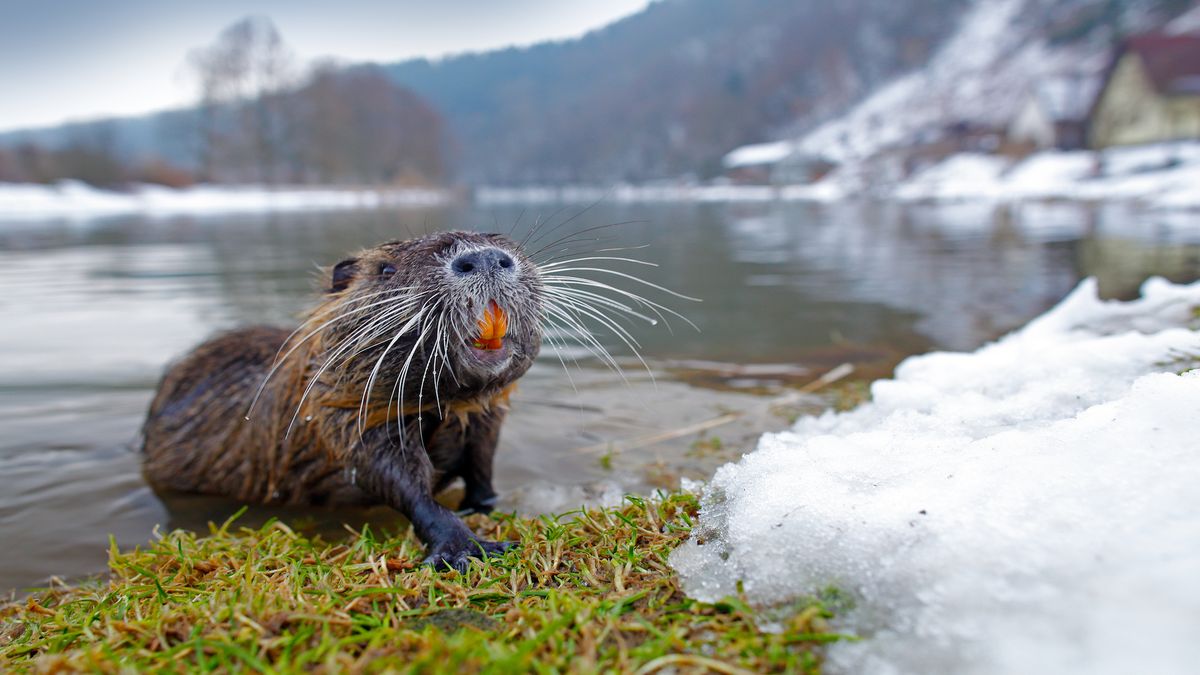
Nutria, also known as coypu, are fascinating creatures with a unique place in the animal kingdom. These semi-aquatic rodents, native to South America, have made their way to various parts of the world, often causing quite a stir. But what makes nutria so interesting? Nutria are known for their large size, webbed hind feet, and orange teeth. They live in burrows alongside stretches of water and are often mistaken for beavers or muskrats. However, nutria have their own distinct characteristics and behaviors. From their diet to their impact on ecosystems, there’s a lot to learn about these intriguing animals. Ready to dive into 28 amazing facts about nutria? Let's get started!
What Are Nutria?
Nutria, also known as coypu, are large, semi-aquatic rodents native to South America. These creatures have made their way to various parts of the world, often causing quite a stir. Let's dive into some fascinating facts about these intriguing animals.
-
Nutria are originally from South America, specifically Argentina, Brazil, and Chile.
-
They were introduced to North America, Europe, Asia, and Africa for their fur.
-
Nutria have webbed hind feet, making them excellent swimmers.
-
Their fur is dense and waterproof, ideal for their aquatic lifestyle.
-
These rodents can weigh up to 20 pounds and grow up to 2 feet long, not including their tail.
Nutria's Unique Physical Traits
Nutria have some distinctive physical features that set them apart from other rodents. These traits help them adapt to their environment and survive in the wild.
-
They have large, orange incisors that are constantly growing.
-
Nutria possess a cylindrical tail, which helps them balance while swimming.
-
Their eyes, ears, and nostrils are positioned high on their heads, allowing them to see, hear, and breathe while mostly submerged.
-
They have a special membrane that covers their eyes underwater, acting like goggles.
-
Nutria have a split upper lip, which helps them feed on aquatic plants.
Nutria's Diet and Feeding Habits
Nutria are herbivores with a voracious appetite. Their feeding habits can have significant impacts on their environment.
-
They primarily eat aquatic plants, roots, and stems.
-
Nutria can consume up to 25% of their body weight in vegetation daily.
-
They are known to dig up roots and rhizomes, which can cause erosion and damage to wetlands.
-
Nutria have been observed eating small invertebrates, although this is rare.
-
Their feeding habits can lead to the destruction of habitats for other wildlife.
Nutria's Reproduction and Lifespan
Nutria are prolific breeders, which contributes to their rapid population growth and spread.
-
They can breed year-round, with females capable of having up to three litters per year.
-
A single litter can contain up to 13 young, although the average is around 4-6.
-
Nutria reach sexual maturity at just 4-6 months old.
-
Their gestation period is approximately 130 days.
-
In the wild, nutria typically live for 3-4 years, but they can live up to 10 years in captivity.
Nutria's Impact on the Environment
Nutria can have both positive and negative effects on their environment. Their presence often leads to significant ecological changes.
-
They can help control invasive plant species by feeding on them.
-
However, their burrowing and feeding habits can cause severe erosion and damage to levees, dikes, and wetlands.
-
Nutria are known to outcompete native species for food and habitat.
-
Their presence can lead to a decline in biodiversity in affected areas.
-
Nutria have been linked to the spread of diseases such as leptospirosis and giardiasis.
Nutria in Popular Culture
Nutria have made their way into popular culture, often being portrayed in various media forms.
-
They have appeared in movies, such as the 2017 documentary "Rodents of Unusual Size."
-
Nutria have been featured in news stories highlighting their impact on local ecosystems.
-
Some regions have even hosted nutria hunting events to control their populations.
Nutria: The Final Word
Nutria, also known as coypu, are fascinating creatures with a rich history and significant impact on ecosystems. Originally from South America, these semi-aquatic rodents have spread to various parts of the world, often causing environmental challenges. Their voracious appetite for vegetation can lead to severe damage to wetlands, riverbanks, and crops. Despite their destructive tendencies, nutria have some redeeming qualities. Their fur has been used in the fashion industry, and they play a role in controlling certain invasive plant species. Understanding nutria behavior, habitat, and impact is crucial for managing their populations and mitigating their effects on the environment. Whether you view them as pests or valuable resources, there's no denying that nutria are a unique and important part of our natural world. Stay informed and engaged with local wildlife management efforts to help balance the coexistence of humans and these intriguing animals.
Was this page helpful?
Our commitment to delivering trustworthy and engaging content is at the heart of what we do. Each fact on our site is contributed by real users like you, bringing a wealth of diverse insights and information. To ensure the highest standards of accuracy and reliability, our dedicated editors meticulously review each submission. This process guarantees that the facts we share are not only fascinating but also credible. Trust in our commitment to quality and authenticity as you explore and learn with us.
